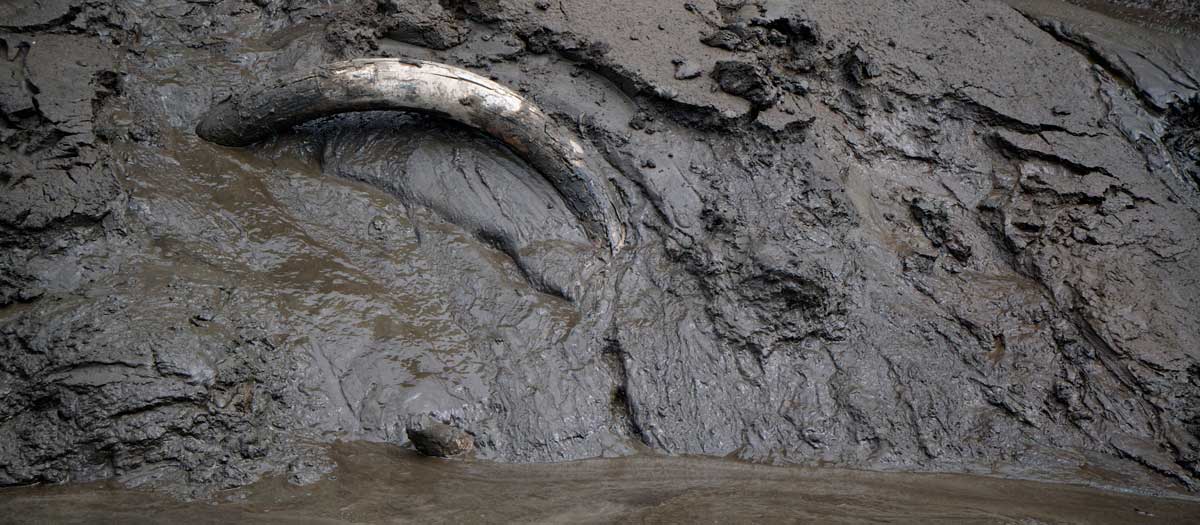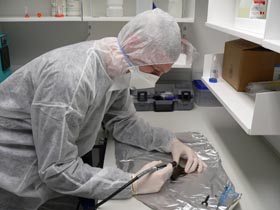
| |
| NEWS! |
| people |
| research |
| publications |
| opportunities |
| contact |
| DNA processing services |
| Arctic Ecology Field Course |
| HELLO. | ||||
Welcome to our lab! The Paleogenomics Lab is a joint venture between two PIs: Beth Shapiro, and Richard (Ed) Green (see Ed's lab website in BME). Our research focuses on a wide range of evolutionary and ecological questions, mostly involving the application of genomics techniques to better understand how species and populations evolve through time. Our groups incorporate experimental and computational approaches. We generate new data and devise new approaches to their analysis, such as tools to assemble genomes and to analyze genomic and population genetic data. Our interests are broad, spanning human evolution, genome assembly and analysis, pathogen evolution, population genetics, conservation genomics, and the genomic consequences of long-term environmental change.. In the Shapiro lab, a common theme to our research is that it tends to involve some aspect of time. The temporal signal comes from historical information, radiocarbon dates, or information from depositional environments. (Check us out in the field!) We combine temporal and genetic data to identify periods of growth, decline, dispersal, and replacement in populations. When possible, we integrate these data with climate and environmental records to try to identify the causative factors behind changes in genetic diversity. We tend to us either a multi-locus or whole-genome approach, in which we enrich our ancient samples for particular loci of interest, or complete genome, data... even for our oldest samples! We have a strong interest in linking genomic data from the past to genomic data isolated from living populations so as to inform decisions that relate to the protection and management of species that are alive today. We are particularly interested in using these data to recnostruct paleoenvironmental changes and learn more about the changing human footprint on our planet, and appling what we learn to decision-making in the present day, such asrelated to the conservation and management of endangered species and habitats. In the Green lab, we are interested in genome biology. We are particularly focused on the problems of assembly and comparative genome analysis. Recent and ongoing projects include genome-scale analysis of archaic human genome sequence, comparative genomics of Crocodilia, and the development of new methods to assemble high quality de novo genomes. We are also interested in applying high-throughput sequencing to address questions in molecular biology including the evolution of gene expression, alternative splicing, and population genetics. We recruit graduate student through both the Graduate Training Program in Biomedical Sciences and Engineering (mainly the Bioinformatics & Computational Biology track) and the Ecology and Evolutionary Biology Graduate Program. Also, check out some of the major projects that we're involved with, including the Genome10K project, and the UC Conservation Genomics Consortium.
DR ED GREEN, PI
Ancient DNA and Paleogenomics The discovery that DNA could be extracted and characterised from preserved biological remains motivated an entirely new field in moleular evolution. Using DNA sequences, or even complete genomes, recovered from these remains, it was possible to trace molecular evolutionary processes in species and populations through time, actually watching evolution as it happens. Using DNA techniques coupled with next-generation sequencing technologies, we aim to answer questions such as:
To address these questions, we use experimental and computational technique such as:
|
ANCIENT DNA CONSERVATION GENOMICS GENOMICS and MOLECULAR EVOLUTION |

